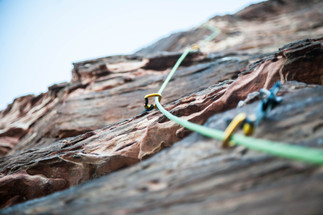13th Apr 2021
The Essential Knots to Know Before Rock Climbing
There are many different types of knots that can be useful as a climber, but these basic knots are sure to get you safely up and down any climb:
1. Euro Death Knot (EDK): This knot is used for rappelling! It joins two climbing ropes together and it’s very easy to tie and untie which means your chances to get hung up on rocks during a rapel are decreased when utilizing this knot.
2. Figure 8 Retraced: This is the basic knot used for tying your rope to your harness, AKA “Tying In”. It’s relatively easy to inspect, and simple to untie if you were to fall.
3. Girth Hitch: This knot is best for tying climbing slings to things like the belay loop, a bolt hanger, anchor, or threads of a rock. This know is also simple to tie, and can even be tied with only ONE hand.
4. Clove Hitch: The clove hitch is the key when you need to quickly tie a rope to a carabiner. It’s also a great knot for anchoring. This knot is especially easy to adjust after being tied and can also be tied with one hand!
5. Munter Hitch: This handy dandy knot allows you to belay or rappel on a rope with a single locking carabiner. This knot in particular could save you when and if you accidentally drop your standard belay or rappel device.
6. Double Fisherman’s: Unlike the name sounds, this knot is used to tie two ends of a cord or rope together and can be used to create a cordellette or a prusik. This knot is known for it’s reliability, and safety when joining two ends of a rope or cord together.

